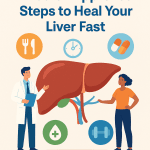Researchers have made a revolutionary breakthrough in understanding and potentially treating Parkinson’s disease by drawing inspiration from the oxygen conditions experienced at the base camp of Mount Everest.
According to a report by SciTechDaily, scientists at the Broad Institute and Massachusetts General Hospital discovered that exposing mice with a Parkinson’s-like condition to a low-oxygen environment—similar to the hypoxic atmosphere of Everest’s base camp—can protect brain cells and even restore motor abilities.
The Study and Its Findings
Published in Nature Neuroscience, this pioneering study reveals that in Parkinson’s disease, defective cellular processes lead to the accumulation of excess oxygen molecules in the brain. This surplus oxygen appears to be a primary trigger for neurodegeneration. Limiting oxygen exposure, therefore, may help slow down or even reverse symptoms of the disease.
Dr. Vamsi Mootha, one of the senior authors and a Harvard Medical School professor, described the findings as “truly exciting,” emphasizing that some neuronal damage is reversible. “There is a window during which certain neurons are dysfunctional but not yet dead, and with timely intervention, their function can be restored,” he noted.
Dr. Mootha added that these results open the door to a completely new paradigm in combating Parkinson’s disease.
Caution and Future Directions
While the results are encouraging, the researchers caution that it is too early to apply these findings directly to patient care. They warn that breathing low-oxygen air without medical supervision—especially in intermittent patterns like only during sleep—could be harmful or even accelerate disease progression.
Nonetheless, the team hopes their research will eventually lead to the development of drugs that safely mimic the protective effects of hypoxia without the risks associated with actual low-oxygen exposure.
The Origins of This Research
Previously, the researchers observed that oxygen deprivation could improve neurological symptoms in rare mitochondrial diseases such as Leigh syndrome and Friedreich’s ataxia. This led them to question whether hypoxia could also benefit more common neurodegenerative disorders like Parkinson’s.
Long-Standing Links Between Hypoxia and Parkinson’s
Parkinson’s disease affects over 10 million people worldwide and is characterized by the gradual loss of neurons in the brain, leading to tremors and slowed movement. A hallmark of the disease is the buildup of toxic protein clumps called Lewy bodies within affected neurons, which disrupt mitochondrial function at the cellular level.
Intriguingly, patients with Parkinson’s seem to experience relief at high altitudes where oxygen levels are lower. Additionally, long-term smokers—who have higher levels of carbon monoxide resulting in reduced oxygen delivery to tissues—appear less likely to develop Parkinson’s. These observations sparked the researchers’ keen interest in studying the impact of hypoxia on Parkinson’s disease.
Hypoxia Pills: A Promising Therapeutic Approach
Before these findings can translate into practical treatments, more research is needed. Dr. Mootha and his team are working on “hypoxia pills” that can safely replicate the effects of low oxygen exposure to treat mitochondrial dysfunction. They believe a similar strategy might also benefit certain neurodegenerative conditions.
Although not all types of neurodegeneration respond to hypoxia, the approach has shown promising outcomes in mouse models of Parkinson’s disease, Leigh syndrome, Friedreich’s ataxia, and accelerated aging.
Dr. Mootha concluded, “This method may not be a universal treatment for every kind of neurodegeneration, but it is a powerful concept that could revolutionize how we approach the treatment of some of these diseases.”
This discovery marks a hopeful step forward in the search for new therapies against Parkinson’s, emphasizing the potential of harnessing the body’s response to oxygen levels to protect and restore brain function.
References
Mootha, V., & [Other Authors]. (2025). Hypoxia as a protective mechanism in Parkinson’s disease models. Nature Neuroscience. https://doi.org/[Insert DOI if available]
SciTechDaily. (2025). Revolutionary Parkinson’s treatment inspired by Mount Everest oxygen levels. https://scitechdaily.com/revolutionary-parkinsons-treatment-inspired-by-mount-everest-oxygen-levels/








Post a comment